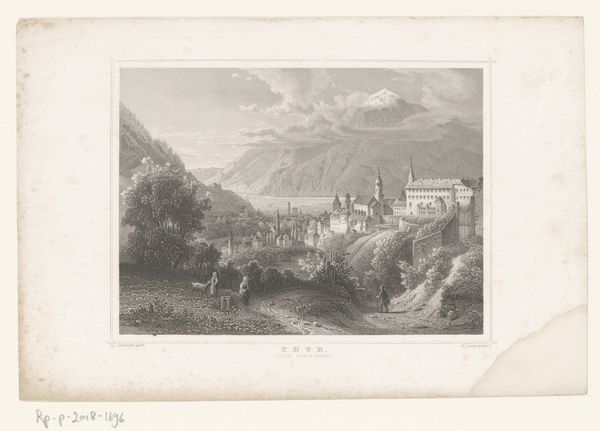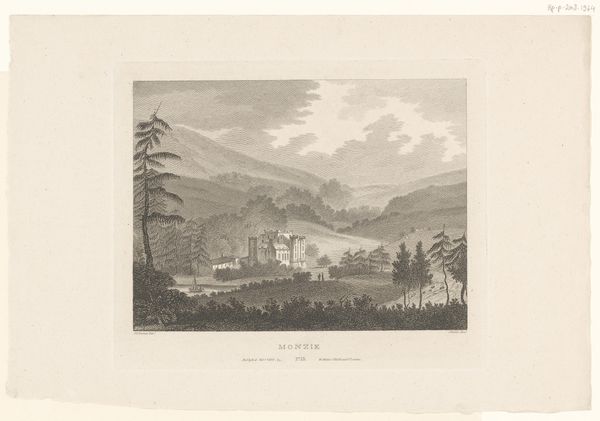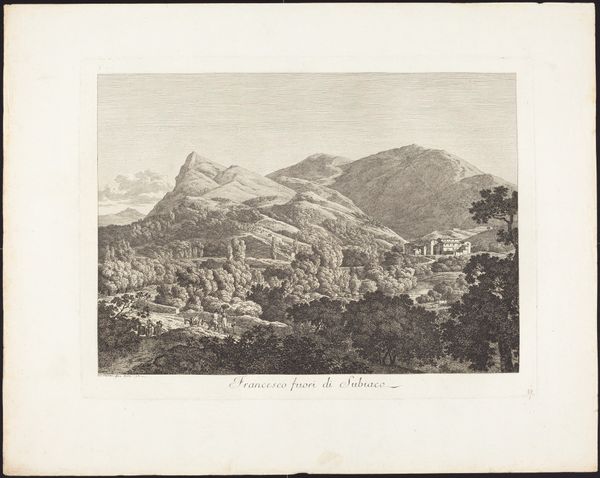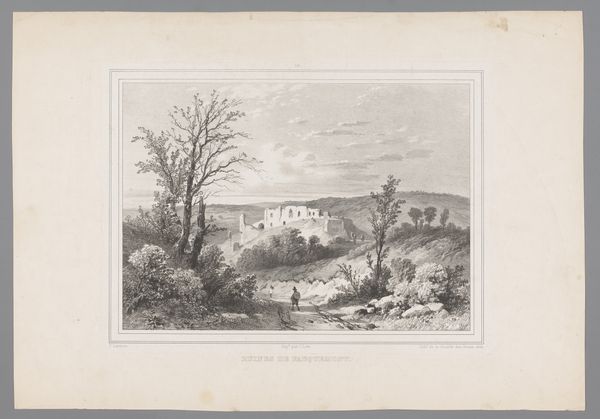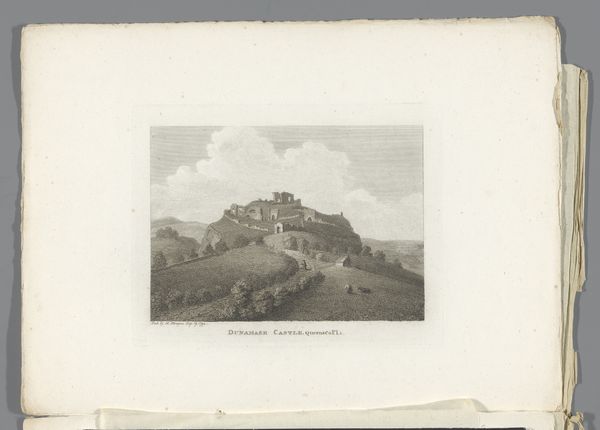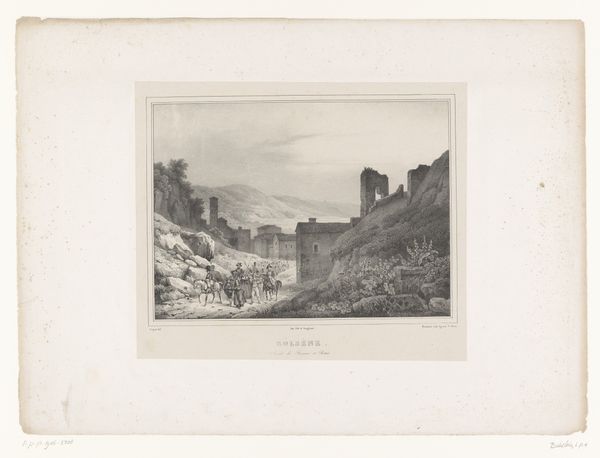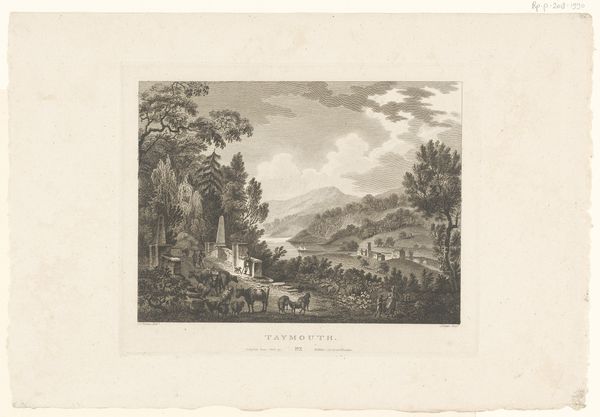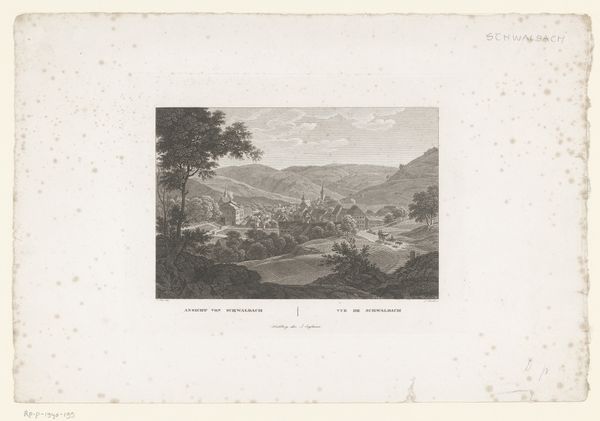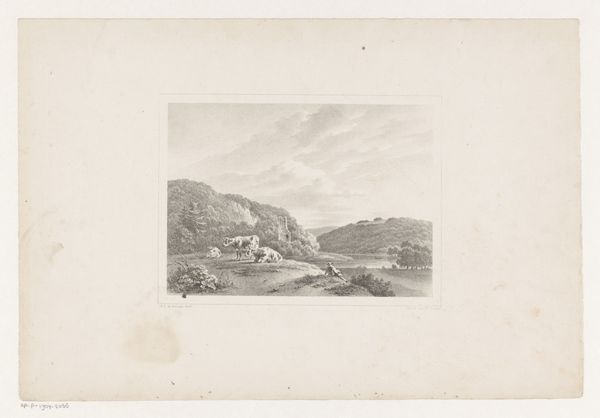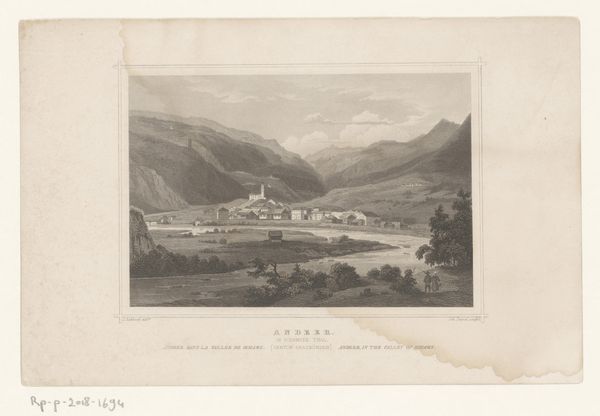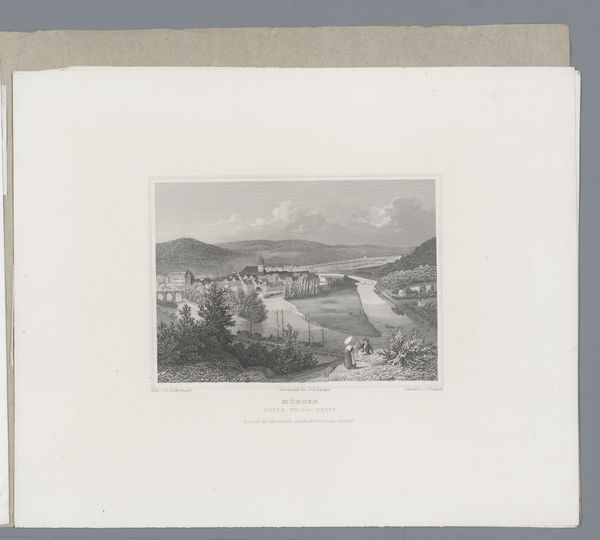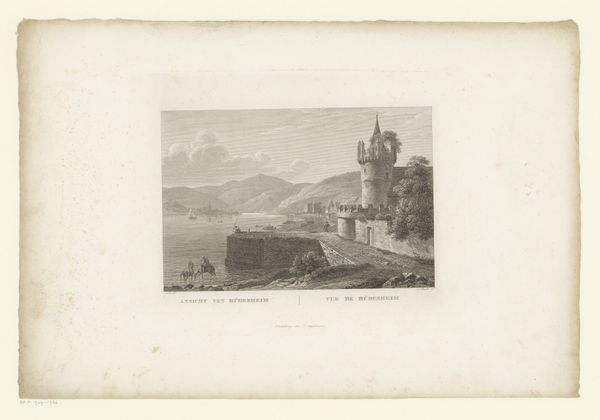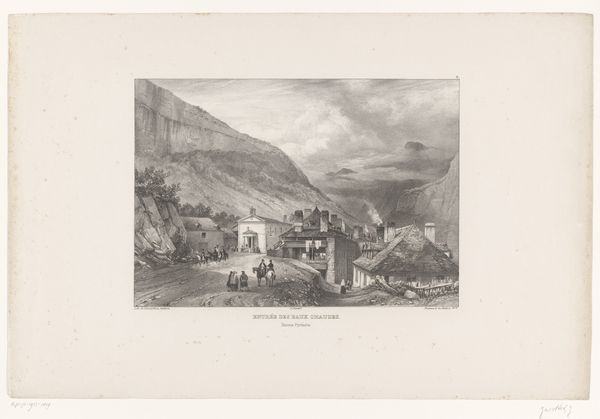
print, paper, engraving
# print
#
landscape
#
paper
#
romanticism
#
cityscape
#
engraving
Dimensions: height 418 mm, width 565 mm
Copyright: Rijks Museum: Open Domain
Curator: This print, titled "Zicht op Tivoli", or "View of Tivoli", was created between 1824 and 1826. It’s attributed to Alphonse Bichebois and rendered as an engraving on paper. It now resides here at the Rijksmuseum. Editor: What a fantastically still scene. It reminds me of those moments in dreams where you can hear your own heartbeat louder than anything else, it gives a quiet, romantic, almost sleepy air with soft edges that cradle everything into place. Does it evoke that for you at all? Curator: It does and it's hard to shake off that feeling. It does suggest that the cultural memory is a sort of soft focus, especially through a Romanticist lens. Take, for instance, how cityscapes traditionally evoke power, wealth, bustling crowds—but here, Tivoli feels hushed. It's timeless, almost outside of any real human context. Editor: Absolutely. The symbolism really stands out here too. This image offers that escape into what could have been, a romanticism not quite rooted in tangible detail, yet there’s still this gentle undercurrent pulling you towards an authentic reality just beyond the sleepy atmosphere. The ox cart below symbolizes both humble labor and steadfast movement; while figures populate this sleepy village they’re more symbols of habit or the daily rhythms of rural life rather than bold players of industry. Curator: It does reflect how romanticism likes to simplify humanity, finding nobility and truth within these daily rural customs. However, for a modern viewer, seeing it this way really prompts questions. Are we getting a truthful depiction or a well-intentioned idealized version? Editor: Perhaps truth itself has less importance to the Romantic spirit, in its quest for heightened emotional and aesthetic experience. And Bichebois captures that, especially when using such subtle monochromatic variations in ink to further establish tranquility through his landscapes and human element combined as one overall unit together! Curator: Ultimately it shows that what really endures is how visual symbols help us continuously renegotiate collective memory. The artwork remains, offering its still, gentle perspective. Editor: A lovely, reflective invitation, wouldn’t you say? A beautiful scene worth contemplating indeed.
Comments
No comments
Be the first to comment and join the conversation on the ultimate creative platform.
